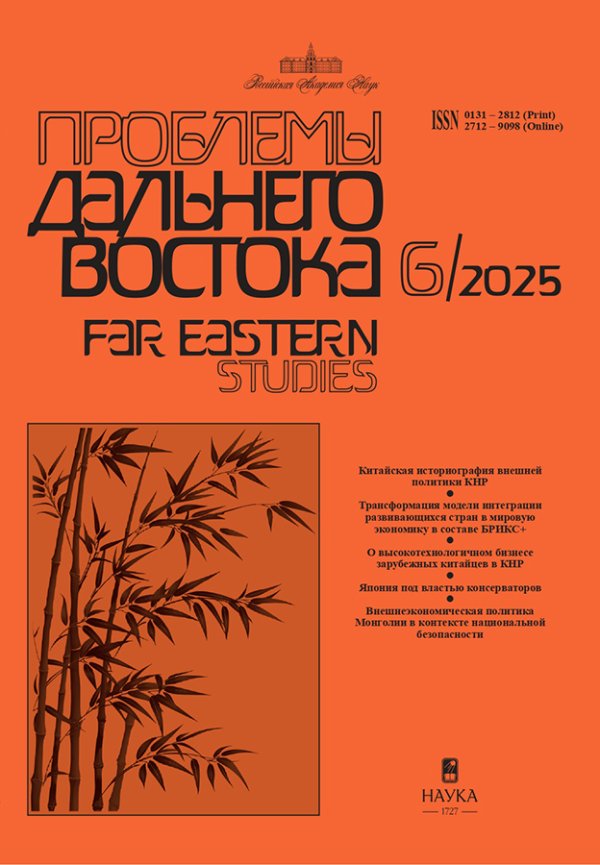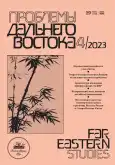Prospects for Russian gas in China
- Authors: Kondratov D.1
-
Affiliations:
- Institute of Economics of the Russian Academy of Sciences
- Issue: No 4 (2023)
- Pages: 46-72
- Section: Articles
- URL: https://journals.rcsi.science/0131-2812/article/view/142518
- DOI: https://doi.org/10.31857/S013128120027172-0
- ID: 142518
Full Text
Abstract
About the authors
Dmitriy Kondratov
Institute of Economics of the Russian Academy of Sciences
Email: pdvjournal@mail.ru
32, Nakhimovsky prospect, Moscow, 117997, Russian Federation
References
- Зуев А. Китай — локомотив рынка СПГ // ТЭК России. 2023. № 1. С. 20–23.
- Кондратов Д. Будущее мирового рынка природного газа // Российский внешнеэкономический вестник. 2022. № 1. С. 66–82. doi: 10.24412/2072–8042–2022–1–66–82
- Annual Gas Market Report 2023: GECF // Gas Exporting Countries Forum. 2023. URL: https://www.gecf.org/_resources/files/events/gecf-unveils-4th-annual-gas-market-report/gecf-agmr-2023.pdf (дата обращения: 13.07.2023).
- Annual Statistical Bulletin 2022: GECF // Gas Exporting Countries Forum. 2022. URL: https://www.gecf.org/_resources/files/events/6th-edition-of-annual-statistical-bulletin-makes-its-debut/gecf-asb-2022.pdf (Дата обращения: 13.07.2023).
- China Natural Gas Data Tables // Ihs Markit. January 2022. URL: https://connect.ihsmarkit.com/document/show/phoenix/392129?connectPath=Search&searchSessionId=ad171e3c-8f3a-484d-b1ab-ee24a5bdefd7 (дата обращения: 12.02.2022).
- EIA (2021), International Energy Outlook 2021 // International Energy Agency. October 2021. URL: https://www.eia.gov/outlooks/ieo/ (дата обращения: 13.07.2023).
- Ermakov A. The Future of Natural Gas in Asia Pacific: Large Potential for Demand Growth // Gas Exporting Countries Forum. March 2023. URL: https://www.gecf.org/_resources/files/events/expert-commentary—-the-future-of-natural-gas-in-asia-pacific/gecf-commentary——the-future-of-natural-gas-in-asia-pacific.pdf (дата обращения: 13.07.2023).
- JODI (n.d.). Online Database. Retrieved from JODI // Joint Organization Data Initiative. URL: http://www.jodidb.org/TableViewer/tableView.aspx?ReportId=38673 (дата обращения: 13.07.2023).
- IEEJ (2022), IEEJ Outlook 2022. Challenges for Achieving Both Energy Security and Carbon Neutrality // The Institute of Energy Economics. October 2022. URL: https://eneken.ieej.or.jp/en/whatsnew/442.html (Дата обращения: 03.11.2022).
- IEA (2022), Coal Market Report // International Energy Agency. URL: https://www.iea.org/reports/coal-2022 (дата обращения: 13.07.2023).
- IEA (2022), World Energy Outlook 2022. doi: 10.1787/3a469970-en
- Miller S., Michalak A., Detmers R., Hasekamp O., Bruhwiler L.,. Schwietzke S. China’s Coal Mine Methane Regulations have not Curbed Growing Emissions // Nature Communications. 2019. Vol. 10(303). Pp. 1–8. doi: 10.1038/s41467–018–07891–7. URL: https://pubmed.ncbi.nlm.nih.gov/30696820/ (Дата обращения: 03.11.2022).
- OPEC (2023). Annual Statistical Bulletin 2023 (ASB) // OPEC. URL: https://asb.opec.org/ (Дата обращения: 13.07.2023).
- OPEC (2022). World Oil Outlook 2045 (WOO) // OPEC. URL: https://woo.opec.org/ (дата обращения: 03.11.2022).
- Paltsev S., Zhang D. Natural Gas Pricing Reform in China: Getting Closer to a Market System? // Energy Policy. 2015. Vol. 86. Pp. 43–56. URL: https://globalchange.mit.edu/sites/default/files/MITJPSPGC_Rpt282.pdf (дата обращения: 03.11.2022).
- Zhang D., Paltsev S. The Future of Natural Gas in China: Effects of Pricing Reform and Climate Policy // Climate Change Economics. 2016. Vol. 7. No. 4. Pp. 1–32. (дата обращения: 03.11.2022).
- Statistical Review of World Energy: Energy Institute // Energy Institute. June 2023. URL: https://www.energyinst.org/statistical-review (Дата обращения: 13.07.2023).
- The 2022 IHS Markit Energy and Climate Scenarios: Global gas summary // Strategy Report. Energy and Climate Scenarios. December 2022. URL: https://connect.ihsmarkit.com/document/show/phoenix/3274463?connectPath=EnergyClimateScenariosLandingPage.Home.FeaturedResearch (дата обращения: 29.12.2022).










